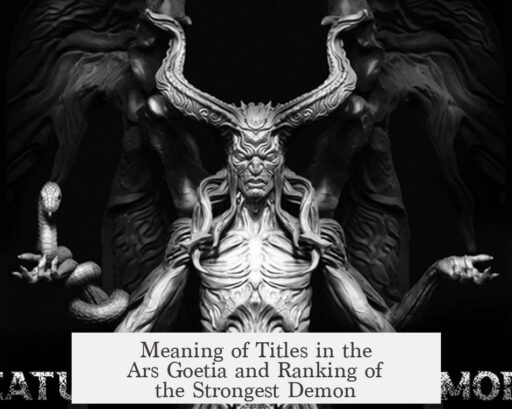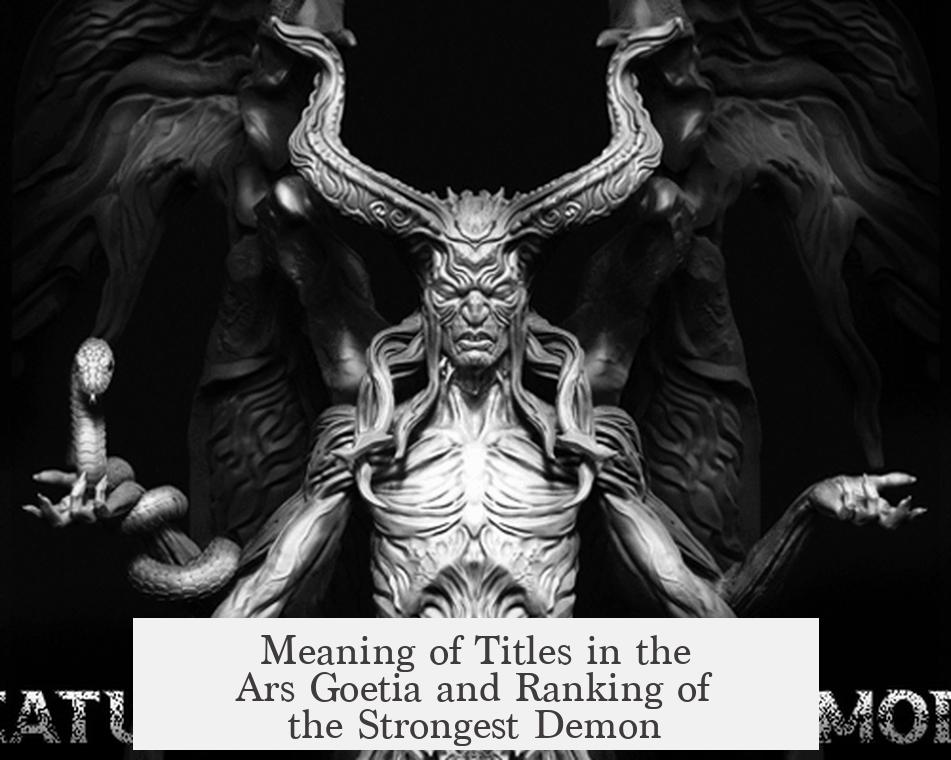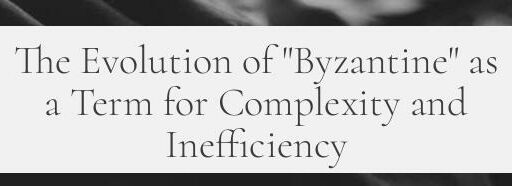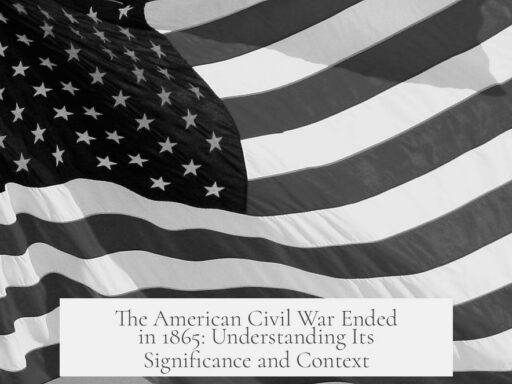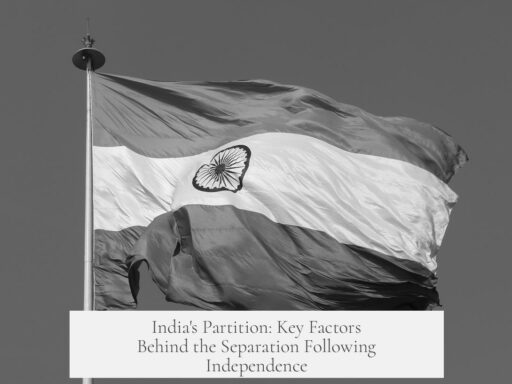The titles of the Ars Goetia carry specific meanings related to the hierarchy, roles, and powers of the 72 demons listed in the grimoire. These titles classify each spirit’s rank, office, and influence, reflecting a complex and somewhat inconsistent system of infernal authority rather than a straightforward measure of strength or power. Among these, certain demons stand out as the strongest due to their position in the hierarchy and narrative descriptions within the texts.
The Ars Goetia is the first section of The Lesser Key of Solomon, a 17th-century English-language grimoire. This text catalogs 72 demons, detailing their names, functions, and instructions for summoning them. These entities are organized into ranks such as kings, dukes, marquises, and princes. These titles reflect both their status and the specific magical symbols (seals) associated with them. The seals, often worn by magicians, differ depending on the demon’s rank, with metals like gold, silver, or copper used accordingly.
The hierarchy, however, is notably inconsistent. Some demons like Belial, Bileth, Asmoday (also spelled Asmoday), and Gaap are identified as the “chiefest” among the 72, indicating a higher status within the hierarchy. These four, along with other powerful figures, fall under the rule of the Four Kings—Amaymon, Corson, Ziminiar, and Goap—who govern the cardinal directions (East, West, North, and South respectively). This structure aims to organize the infernal spirits in a quasi-military style chain of command, though overlaps and contradictions exist.
The strongest demon often debated is Belial, described as created next after Lucifer and belonging to his order, implying close proximity to the infernal ruler. Asmoday is described as “first and chiefest under the power of Amaymon,” suggesting a vital subordinate role. Gaap is paradoxically listed both as one of the 72 demons and as one of the Four Kings, which causes confusion due to the duplicate naming. These demons wield significant influence within the system, yet practical strength cannot be reliably determined solely by title or numbering.
| Demon | Title/Rank | Role and Position | Notes |
|---|---|---|---|
| Belial | King | Created next after Lucifer; high-ranking infernal noble | Numbered 68; “chiefest” |
| Asmoday (Asmodeus) | King | Chief under King Amaymon; powerful and influential | Numbered 32 |
| Gaap (Goap) | King and also Four King | One of the 72 as well as one of the Four Kings; unclear rank | Numbered 33 |
| Bileth | Marquis | Considered “chiefest” among non-kings | Numbered 13 |
The numbering of demons in the Goetia does not correspond to strength or rank. The sequence appears scrambled and differs from earlier sources like Johann Weyer’s Pseudomonarchia Daemonum. This inconsistency suggests the numbers serve as identifiers rather than indicators of power or authority. Joseph Peterson notes the order may have been randomized during transcription or compilation. Thus, selecting the “strongest” demon based on numbers alone is unreliable.
The titles mean more in terms of magical utility and ritual protocol. For example, the hour to summon or bind a demon depends on rank: kings can be controlled during specific daytime hours, while marquises have different time windows. The metal used to create the magic seal worn by a conjurer also depends on rank, underscoring symbolism rather than direct power comparison.
The concept of the Four Kings is significant. They are cardinal rulers over other demons, similar to earlier grimoires such as Le Livre des Esperitz. In Goetia, these kings (Amaymon, Corson, Ziminiar, and Goap/Gaap) serve as top-tier sovereigns, though the ultimate infernal authority is Lucifer alone, contrasting with other traditions where multiple high demons share power.
- The titles in the Ars Goetia define rank and role within an infernal hierarchy rather than absolute power.
- The strongest demons are often cited as Belial, Asmoday, Bileth, and Gaap, though exact strength is ambiguous.
- Numbering is inconsistent and does not reflect a demon’s strength or status.
- Rank affects magical rituals, including the timing of summons and materials for seals.
- The Four Kings are supreme rulers over the 72 demons, representing the four cardinal directions.
Do the Titles of the Ars Goetia Mean Anything? And Who’s the Strongest
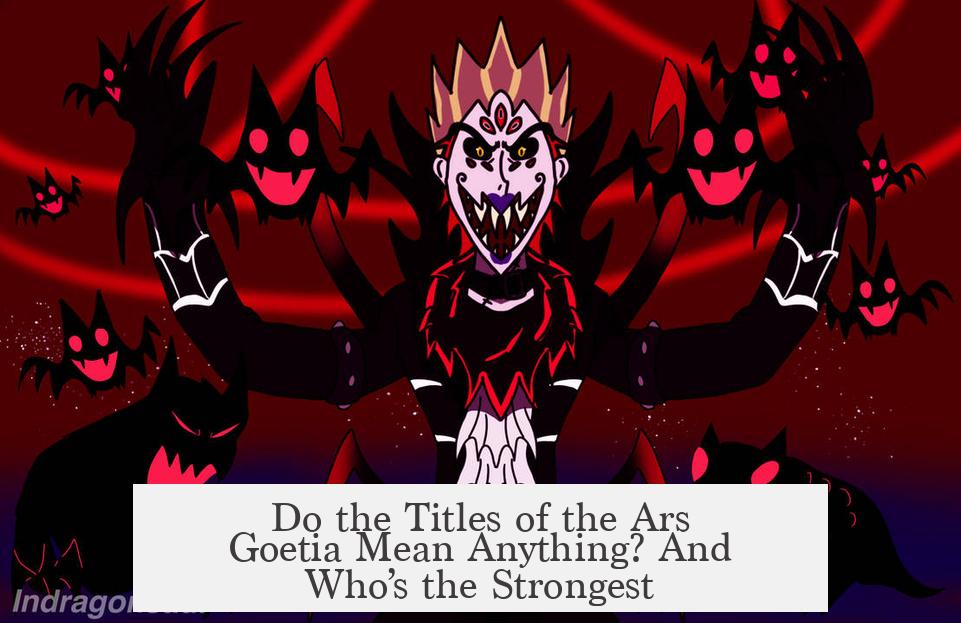
Yes, the titles of the demons in the Ars Goetia do carry meaning — but their significance is more complex than you might think. They reflect a hierarchy, ranks, and offices assigned to each spirit, much like job titles in an infernal corporate structure. But just like any weird office, the hierarchy isn’t always logical or consistent.
Let’s explore what these titles actually mean and, since you’re probably curious, who is considered the strongest demon in this unusual hierarchy.
What is the Goetia, Anyway?
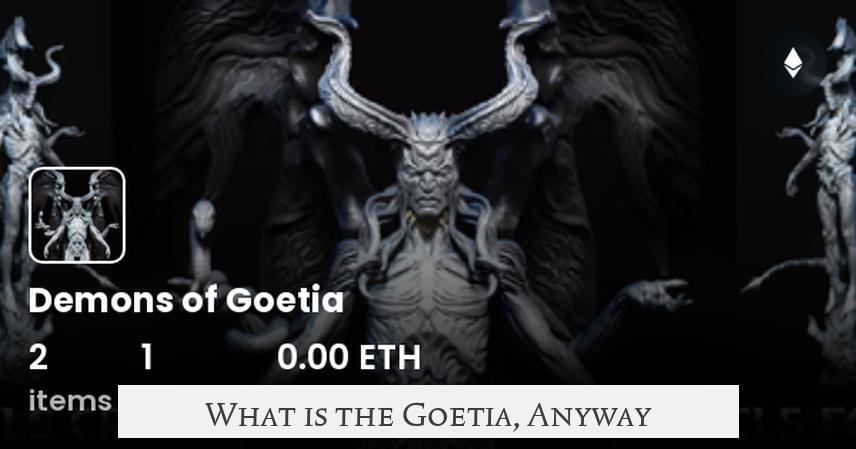
The Goetia is the first section of the Lesser Key of Solomon, a famous 17th-century grimoire. It’s basically a manual describing 72 demons—who they are, their powers, and how to summon them safely (if you’re brave enough).
The book claims to compile all the spirits King Solomon ever spoke to. The rituals allow magicians to summon and control these demons. If you think of it, it’s a bit like having a guidebook for hiring really spooky employees.
Interestingly, the Goetia isn’t unique. It closely resembles other demon catalogs, like Johann Weyer’s Pseudomonarchia Daemonum from 1583, which lists 69 demons, and earlier manuscripts such as Le Livre des Esperitz and The Book of Oberon. So, there’s a grand tradition of demon phonebooks waiting to be cracked open.
What Do the Titles Mean?
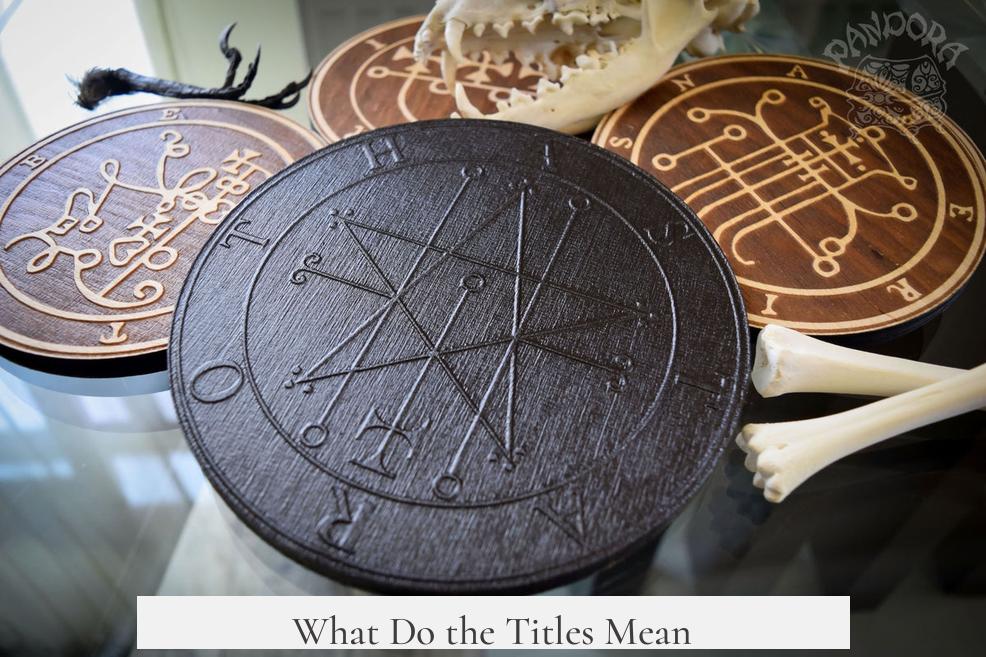
Each of these 72 demons has a title or rank — kings, dukes, princes, marquises, counts, and so on. These ranks form a kind of infernal corporate ladder. Kings like Belial or Bileth stand near the top, while others hold the offices of dukes or marquises.
But here’s the kicker: the ranking system isn’t perfectly consistent. The hierarchy has some puzzling contradictions.
For example, the demons Gaap and Goap seem to be the same entity under slightly different spellings. Yet, Gaap is both one of the 72 numbered demons *and* one of the four kings ruling the cardinal points—East, West, North, and South—above the main set. It’s like finding your boss on both the worker and the executive list.
Who’s the Strongest Demon?
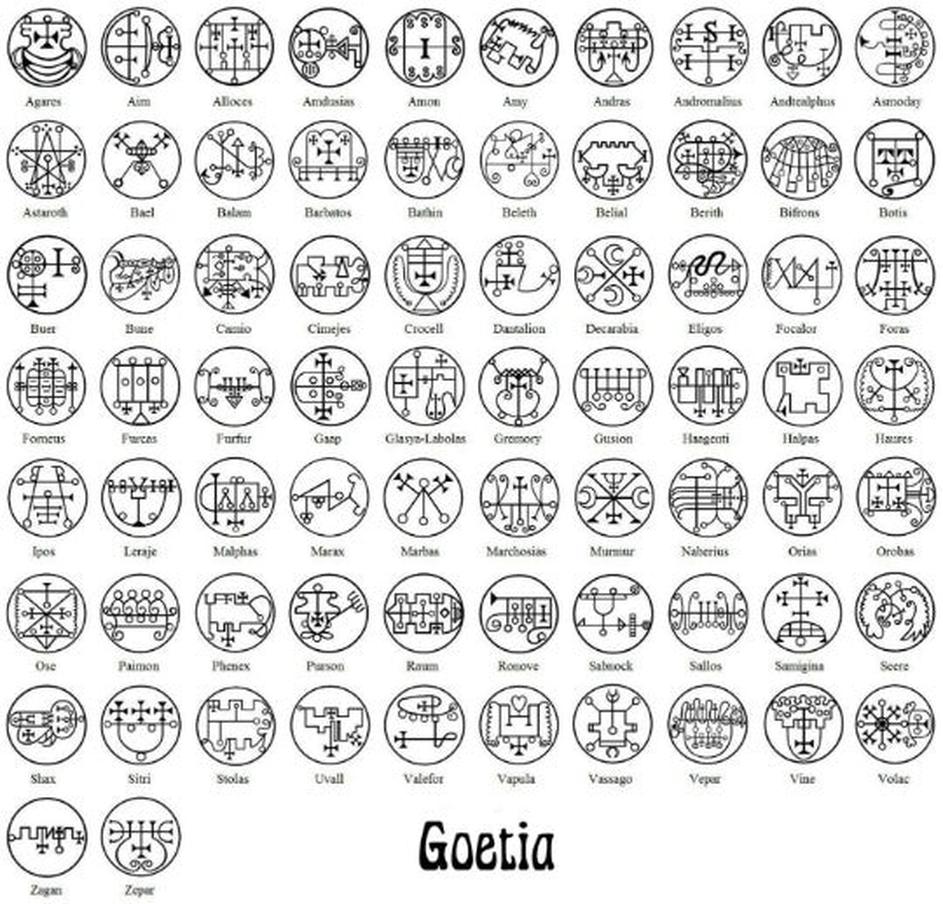
Now, onto the juicy question everyone wants answered: who’s got the biggest infernal muscles?
The Goetia identifies four “chiefest” demons: Belial, Bileth, Asmoday, and Gaap. These are the heavy hitters—some of the main power players. However, all 72 demons ultimately fall under the command of the Four Kings: Amaymon, Corson, Ziminiar, and Goap, each ruling a cardinal direction.
But here lies the complication: according to some notes, Amaymon is said to be the king of Gaap, not the other way round. Also, Belial is described as “created next after Lucifer and is of his order,” implying immense power. Meanwhile, Paimon is “very obedient to Lucifer,” suggesting a lesser rank. So, power is not just about titles; allegiance to Lucifer seems to carry weight.
The hierarchy resembles a celestial chess game shrouded in mystery, with Lucifer often standing as the ultimate infernal ruler, above even the Four Kings.
What Practical Meaning Do These Titles Have?
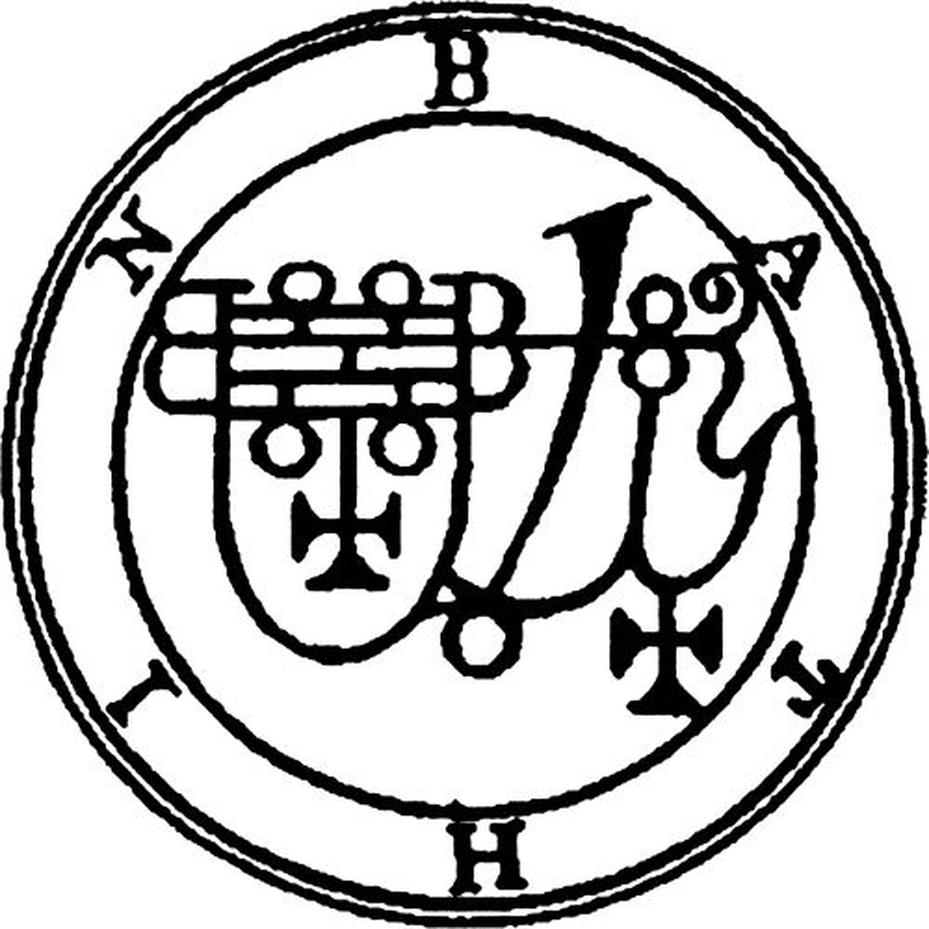
The titles aren’t just for show. They matter for practical magical purposes:
- Each demon comes with a unique seal or symbol, which a conjurer must wear during rituals.
- The metal of the seal depends on rank—for example, kings get gold seals, marquises silver, and dukes copper. It’s like medieval bling indicating status.
- Also, the conjuring must occur at specific times depending on rank. Kings can be summoned between 9 a.m. and noon and again from 3 p.m. to sunset, whereas marquises can be controlled between mid-afternoon and sunrise.
So, the titles guide how you professionally engage with these infernal forces. This is no casual summoning; it requires precise timing and decorum.
Are the Numbers Meaningful? Is #1 the Strongest?
Surprisingly, the numbering of demons is largely meaningless in terms of strength or hierarchy. Belial, one of the top demons, is number 68, while Bileth is 13, Asmoday 32, and Gaap 33. The order doesn’t follow a clear pattern.
Joseph Peterson notes that the Goetia‘s numbering seems scrambled compared to other texts like the Pseudomonarchia Daemonum. He suggests it’s as if the list got mixed up like a deck of cards—a bit chaotic and confusing.
What’s the Takeaway?
The titles in the Ars Goetia do mean something, but their meaning operates at multiple levels: symbolic, ritual, and hierarchical—and none of these lines up perfectly. The hierarchy is more about ritual order and magical precision than a straightforward ranking of power.
If you’re asking who’s strongest, the chief demons—especially Belial and Asmoday—take the top spots, but their real power lies in complex relationships with Lucifer and the Four Kings.
So next time you peek into this ancient grimoire, remember: these titles and numbers serve a magical system with its own rules, some baffling, some precise, and all woven into an eerie story of control over supernatural forces.
Got thoughts? Imagine you’re a sorcerer needing to summon just the right demon — would you trust the title? Or would you lean on personal tales of power from ancient grimoires? It’s a fascinating blend of order and chaos, just like any office drama, but multiplied by demons.
Do the titles of the Ars Goetia demons have specific meanings?
The titles represent ranks and offices. Each demon holds a position like king, duke, or marquis. These ranks decide their seals and times for summoning. The titles mark hierarchy, not personal qualities.
Who is considered the strongest demon in the Ars Goetia?
Belial, Bileth, Asmoday, and Gaap are the top-ranked demons, often called the “chiefest.” However, four kings—Amaymon, Corson, Ziminiar, and Goap—rule over the 72 demons, with Amaymon seen as leading the others.
Is the numbering of demons in the Goetia linked to their strength?
No, numbering does not indicate power. The order appears scrambled and inconsistent across different sources. For example, powerful demons like Belial and Gaap have numbers far apart.
What practical role do the ranks of demons play?
Ranks affect the materials used for their seals and the hours for summoning. Kings use gold seals and can be bound during specific daytime hours. Lower-ranked spirits follow different rules.
Why is there confusion about Gaap’s position in the hierarchy?
Gaap appears both as one of the 72 demons and as one of the four ruling kings. This duplication creates inconsistency and confusion about his exact rank and role.
